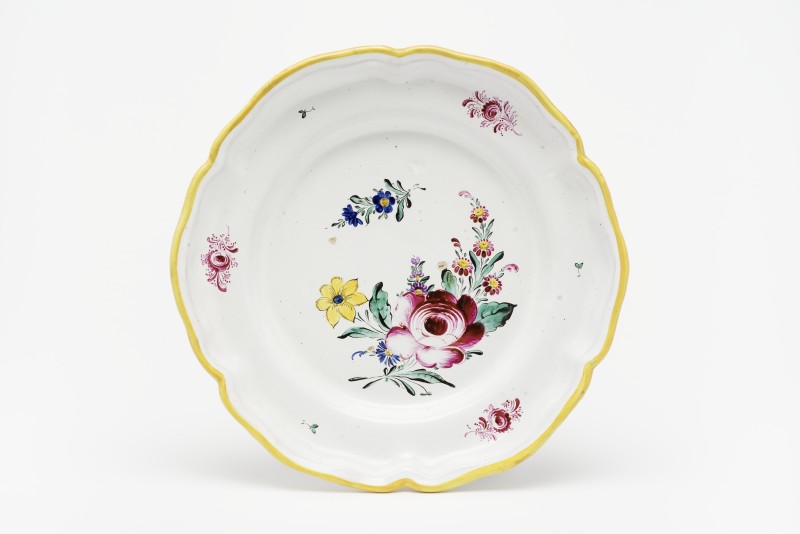Tiefer Teller ohne Standring mit flachem Spiegel, kurzem steilem Anstieg und schräg ansteigender Fahne mit sechspassig geschweiftem Profilrand.
Im Spiegel Bukett aus purpurroter Rose, gelber Narzisse (?) und anderen Blumen. Daneben ein einzelner Blütenzweig. Auf der Fahne drei stilisierte Blütenzweige in Purpurrot, alternierend mit drei kleinen Blattzweigen. Der Rand der Fahne in Gelb.
Drei kleine Glasurabplatzungen auf dem Spiegel.
Marke in Blau auf dem Boden: „H.“
Vermächtnis Dr. Rainer und Hannelore Flöhl, Offenbach/Main, 2017
en

